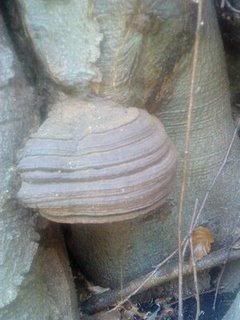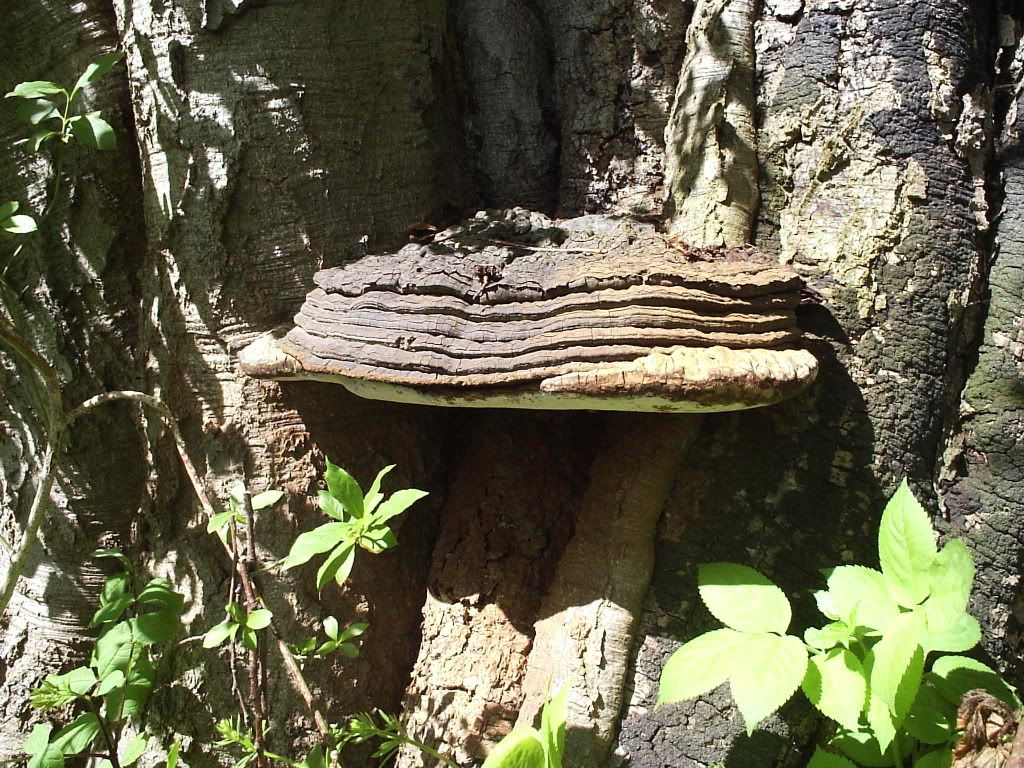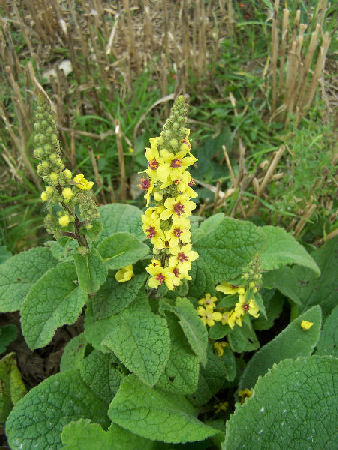Reading up about the horse hoof fungus, I found that it lives mostly in the North of England and Scotland, and mainly on dead birch and beech trees.
So whilst partaking in my walk the other day here in the Forest of Dean, Gloucestershire I passed the landmark of a huge dead old beech stump that had been struck by lightning a few years ago..... and there on the trunk .... could it be? Hmmmm.... sure looked like it. A horse hoof fungus, or to be precise, four horse's hooves.
So I sawed off one of the hooves and took it home..... and dried it on the top of the radiator for a while as it was very sodden. Cut off the crust.... and cut a few slices and tested it. It lit with just one spark! Immediately.
Now, reading all the web wisdom, I am told that you should boil the slices in various compunds, dry it, and then beat it to death with a hammer. Then scrape some fluffy fibres off it to light. I did none of that, I just lit it.
A small piece a couple of inches long will smoulder for a couple of hours! At any time you can just pick up the piece and blow on it gently to get enough brightness to light tinder. It just ain't going to go out unless you pour water over it!
Today I went back and got the other three quarters off the trunk.

A quarter of it cut off and sliced, and the bits of amadou kept in a tobacco tin.

Three hooves left...

The best part is the dark half under the hard crust. The lower (more pale) fibrous part will smoulder too, but not quite as well.
I probably have a lifetime's supply of the stuff here. And there is another big one still on the tree.
Rod
So whilst partaking in my walk the other day here in the Forest of Dean, Gloucestershire I passed the landmark of a huge dead old beech stump that had been struck by lightning a few years ago..... and there on the trunk .... could it be? Hmmmm.... sure looked like it. A horse hoof fungus, or to be precise, four horse's hooves.
So I sawed off one of the hooves and took it home..... and dried it on the top of the radiator for a while as it was very sodden. Cut off the crust.... and cut a few slices and tested it. It lit with just one spark! Immediately.
Now, reading all the web wisdom, I am told that you should boil the slices in various compunds, dry it, and then beat it to death with a hammer. Then scrape some fluffy fibres off it to light. I did none of that, I just lit it.
A small piece a couple of inches long will smoulder for a couple of hours! At any time you can just pick up the piece and blow on it gently to get enough brightness to light tinder. It just ain't going to go out unless you pour water over it!
Today I went back and got the other three quarters off the trunk.

A quarter of it cut off and sliced, and the bits of amadou kept in a tobacco tin.

Three hooves left...

The best part is the dark half under the hard crust. The lower (more pale) fibrous part will smoulder too, but not quite as well.
I probably have a lifetime's supply of the stuff here. And there is another big one still on the tree.
Rod

 Nice find !
Nice find !



